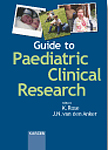As off-label use of medicines in children is no longer acceptable
today, paediatric drug development is currently in transition from an
almost exclusive academic specialty towards an integrated part of the
global process that drives the development of new pharmaceuticals. US
and EU governments have made it mandatory for the pharmaceutical
industry to investigate medicines in children, thus exposing a
multitude of different institutions to paediatric research. Written
by exponents of the academia as well as the pharmaceutical industry,
regulators and patient advocacy groups, this book explains the
background of the US and EU paediatric legislations, gives an
analysis of their probable short-, mid- and long-term impact,
addresses key operational challenges in paediatric research, and
develops a tentative vision where paediatric drug development needs
to go.
Helping to understand the role of the different stakeholders, the
spectrum of readers to profit from this book ranges from
paediatricians, general medical personnel and pharmacologists to
those involved in regulatory affairs and clinical trials,
pharmaceutical company management, patient advocacy groups, ethical
committees, politicians and interested lay persons.
Preliminary Pages
I Contents / Introduction from the Editors / The Editors / Author's
Short Biographies / Author's Addresses
Paper
1 Europe뭩 Path towards Better Medicines for Children
5 The European Academy of Paediatrics (EAP/CESP) and Its Demand for
More Clinical Research
13 Paediatric Medicines: A View from Patient Organisations
25 Paediatric Drug Development ?Historical Background of Regulatory
Initiatives
33 ICH E 11: Clinical Investigation of Medicinal Products in the
Paediatric Population
38 Ethical Challenges of Clinical Research in Children
47 Consent and Assent in Paediatric Clinical Trials
59 Collecting Blood and Tissue Samples in Paediatric Clinical Trials
65 Paediatric Formulations
78 Central Laboratory in Paediatric Clinical Trials
87 Study and Protocol Design for Paediatric Patients of Different
Ages
108 Innovative Methodologies for Drug Evaluation in Children
115 Challenges in the Research of Very Small Children
126 Clinical Research for Infant Nutrition
133 Conclusions: Paediatric Drug Development in a Global Context
Indices
135 Author Index
136 Subject Index


